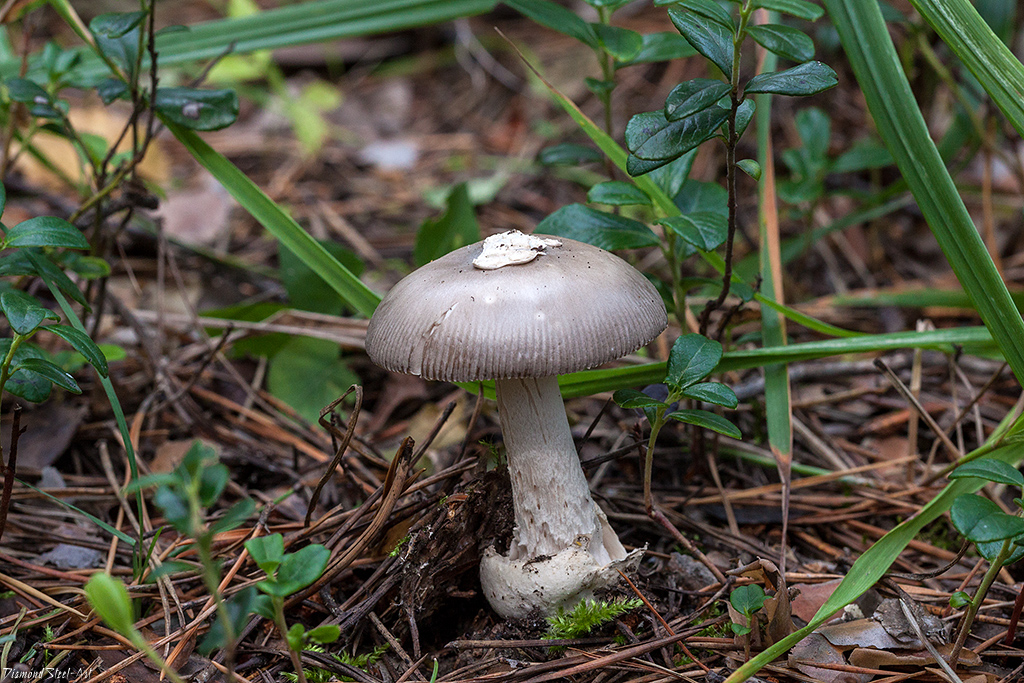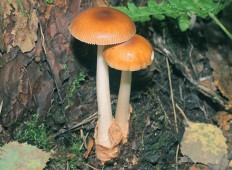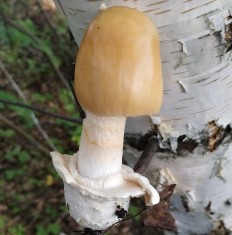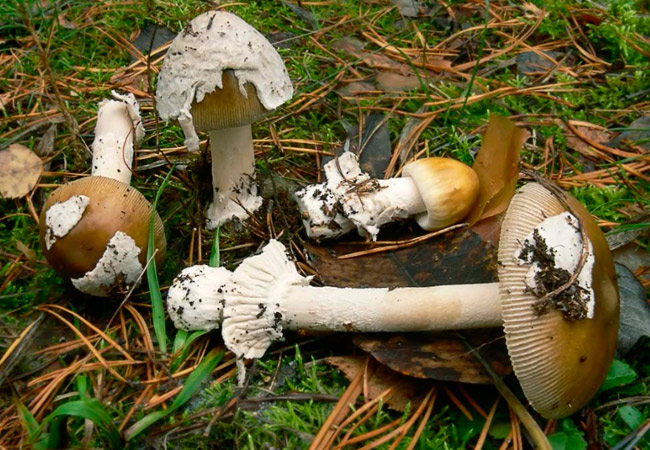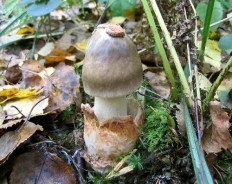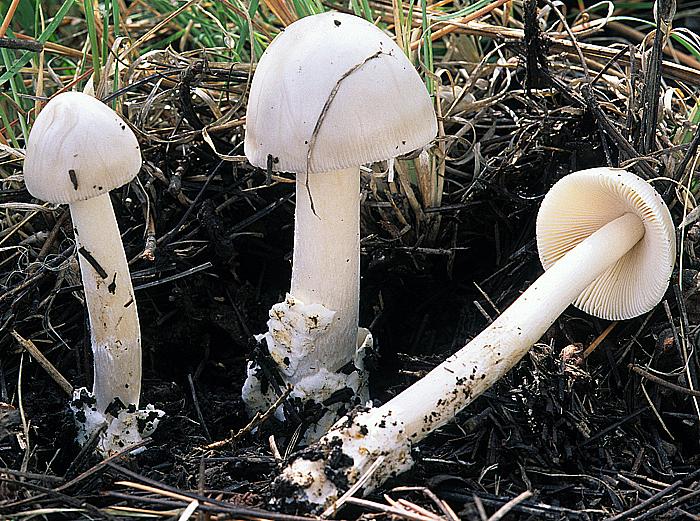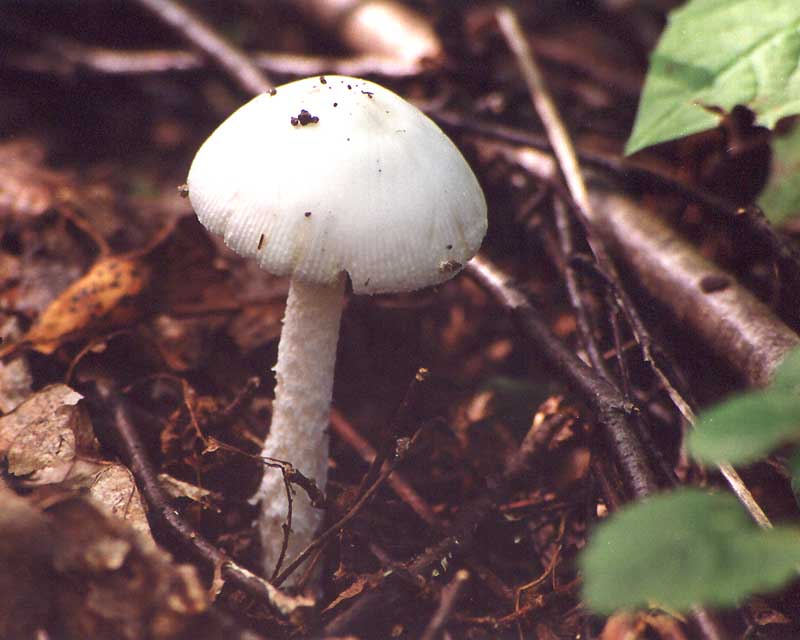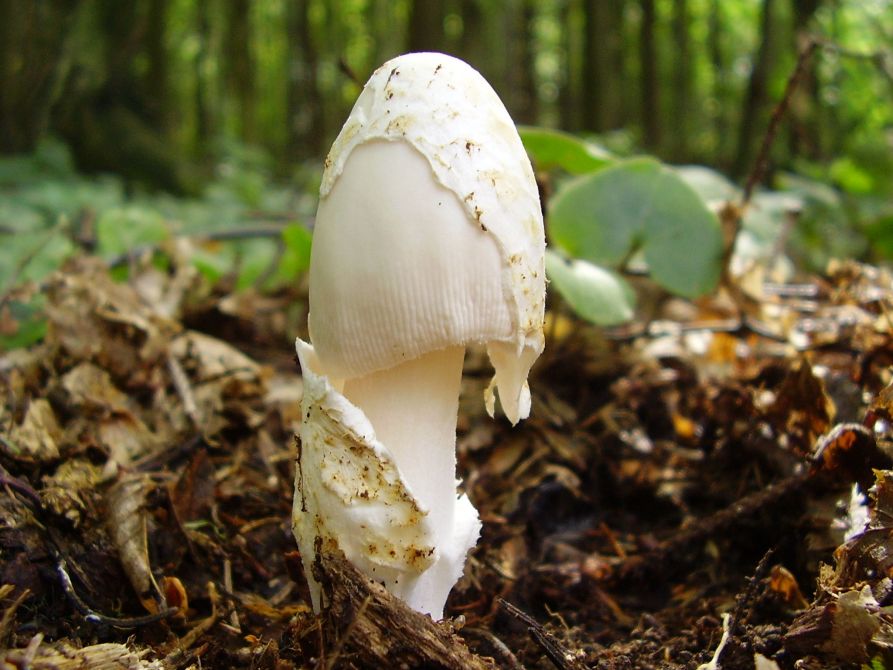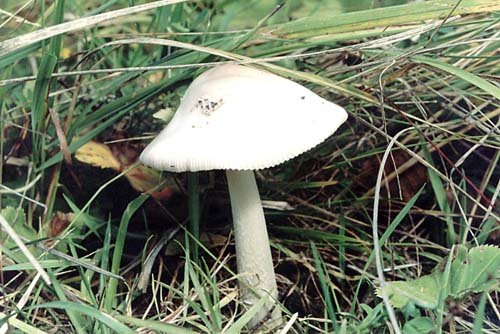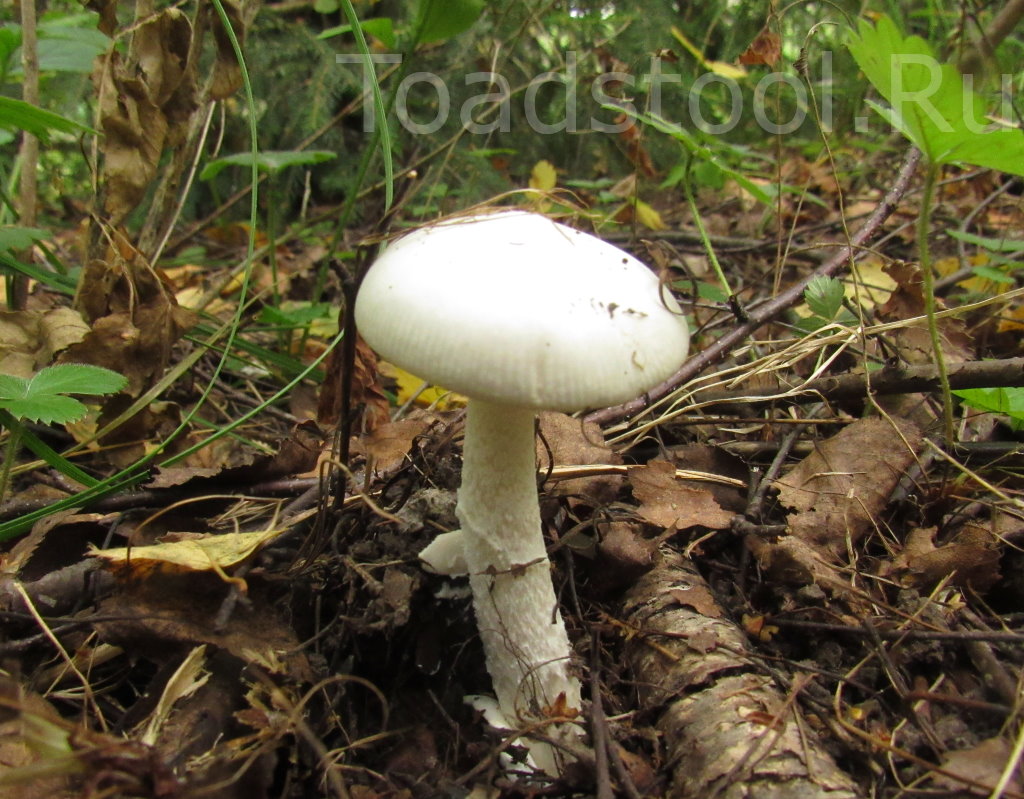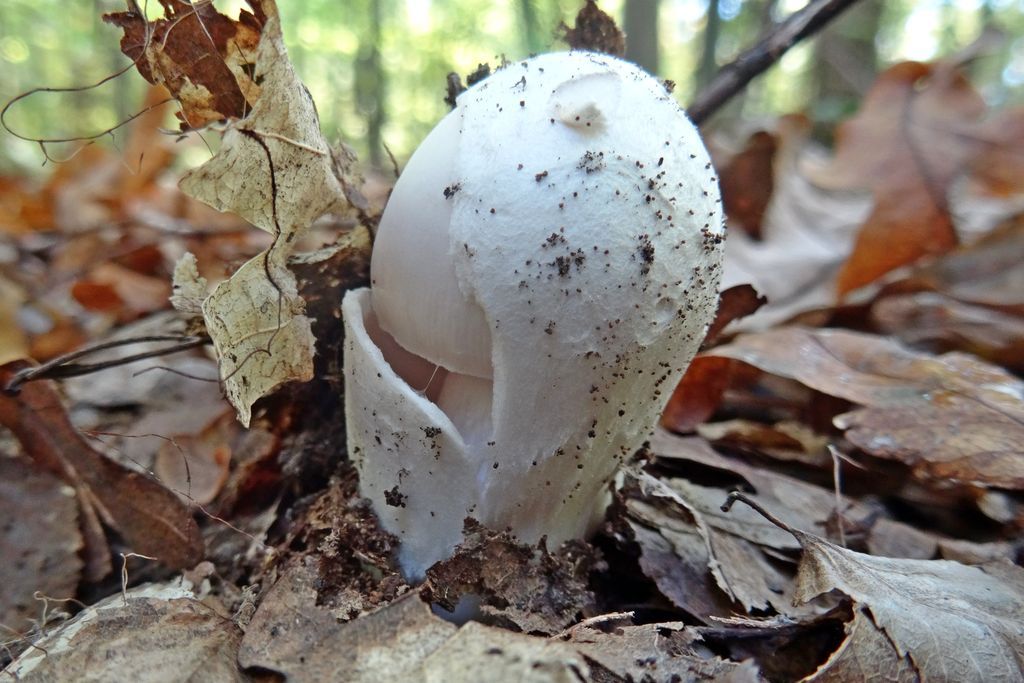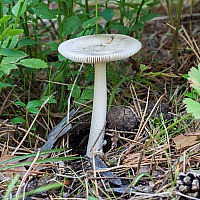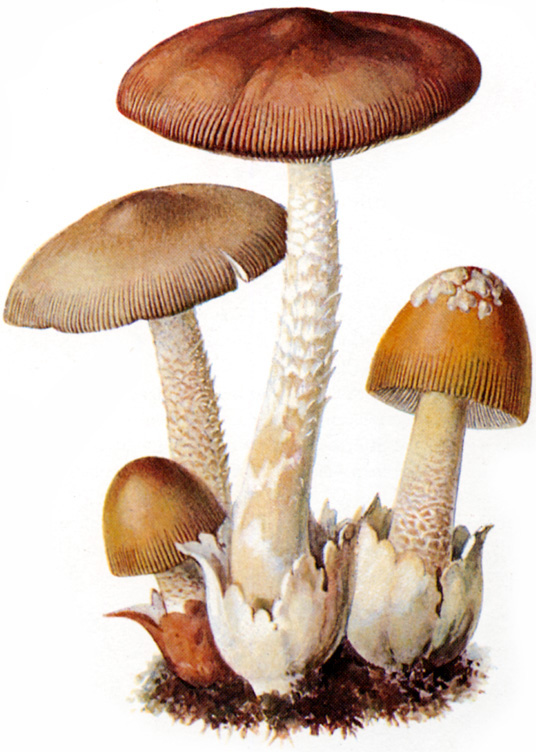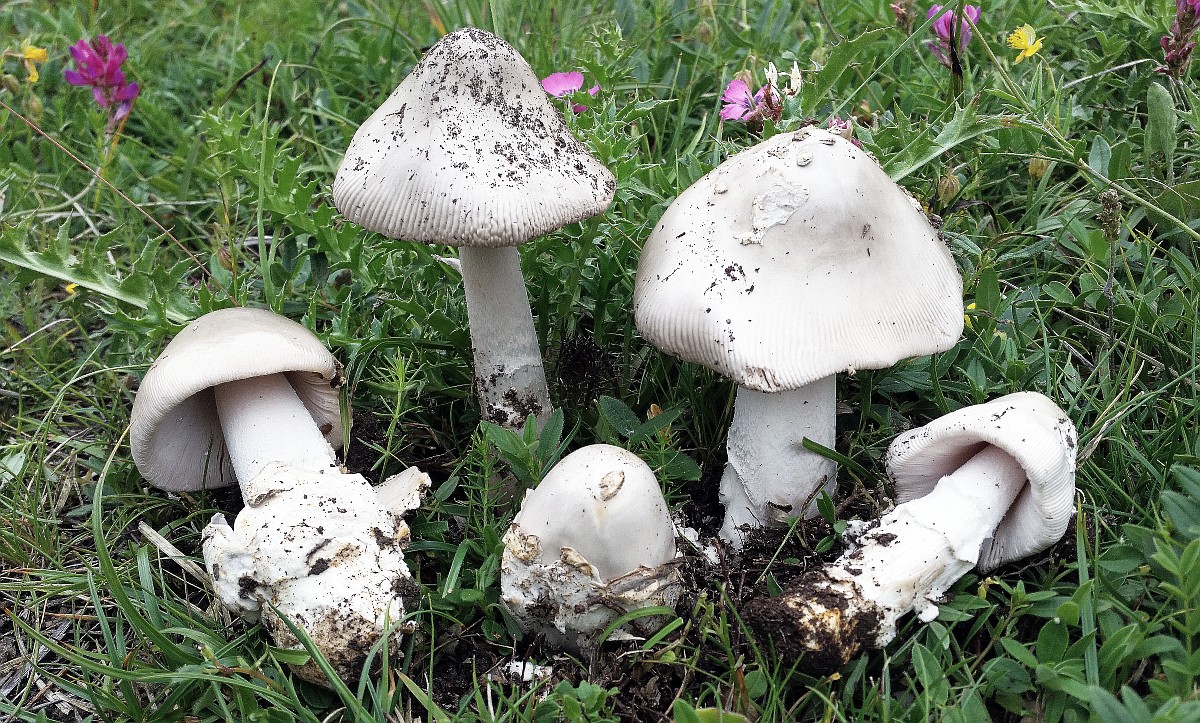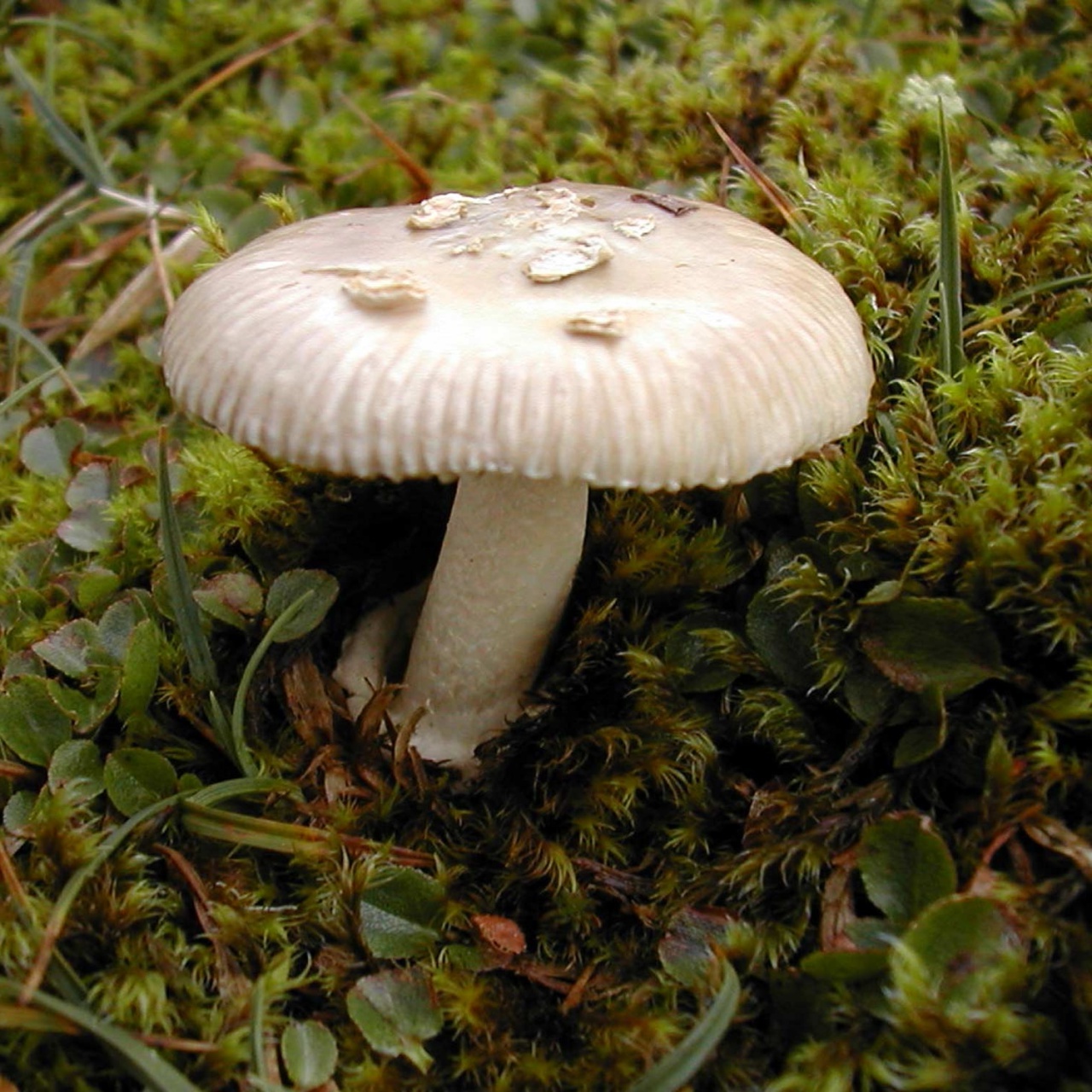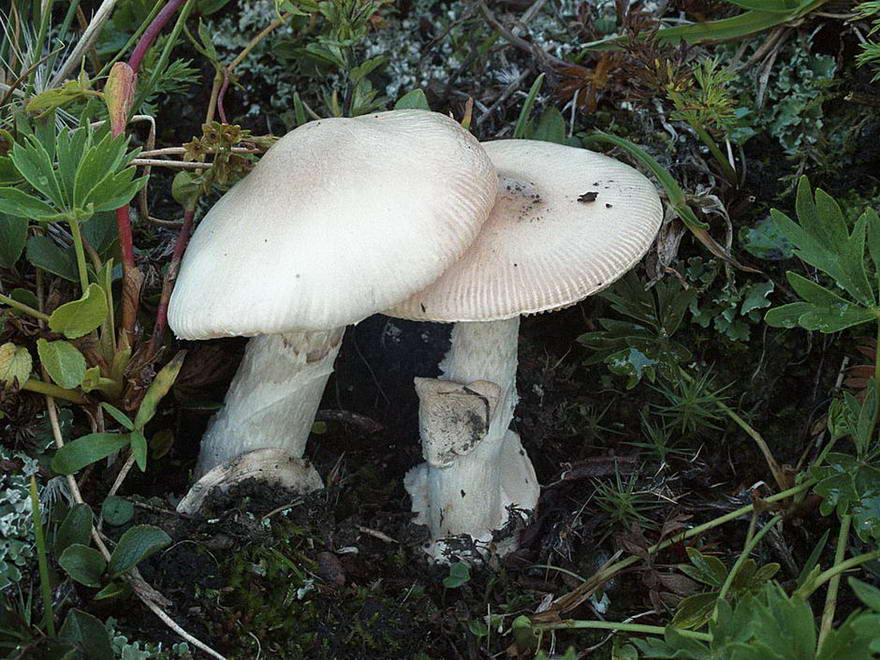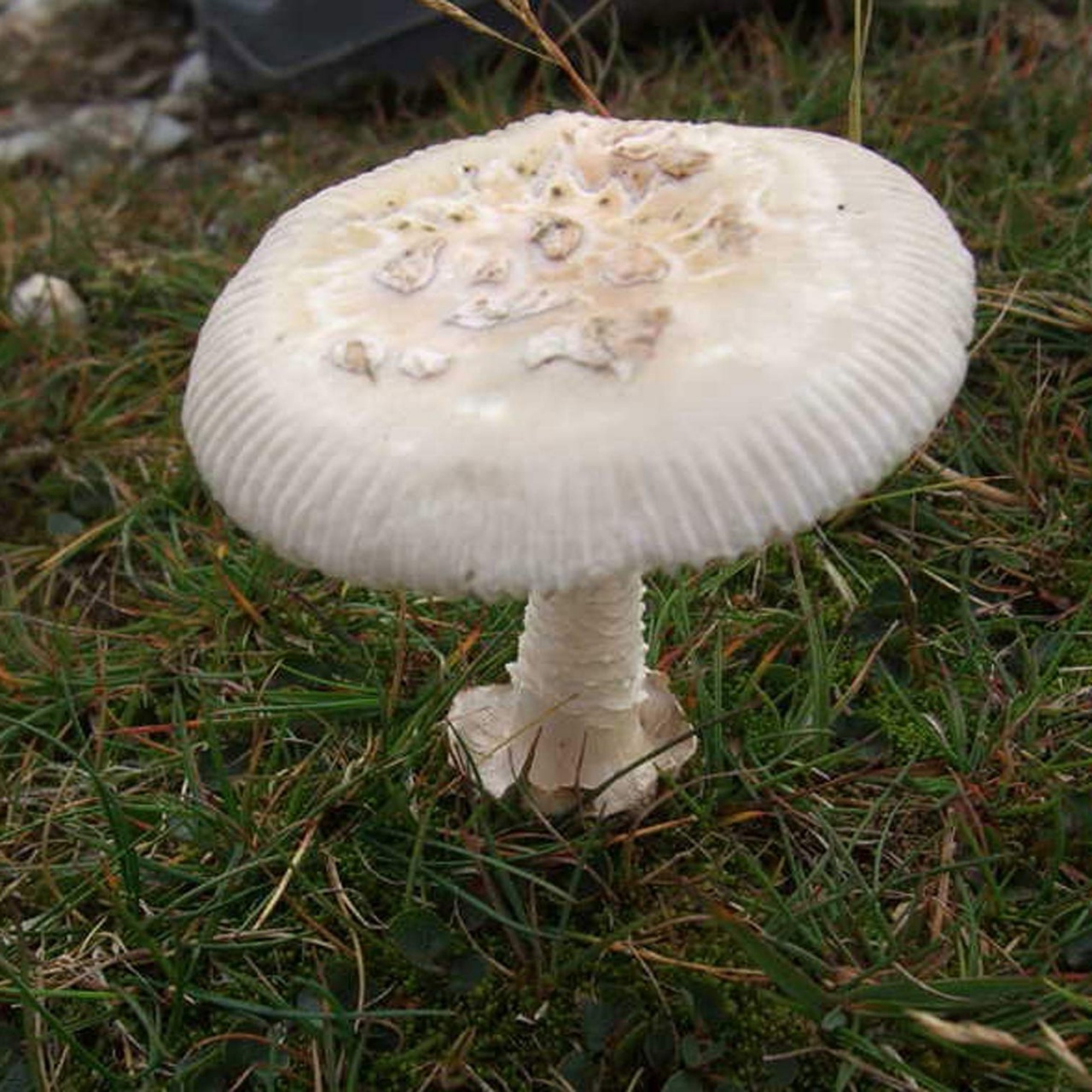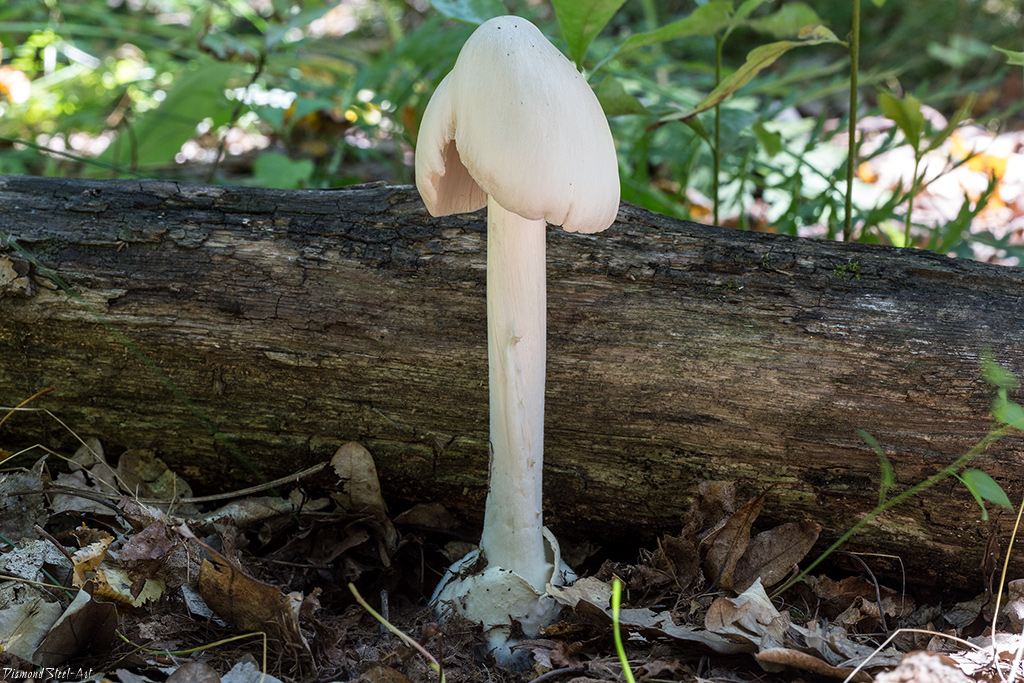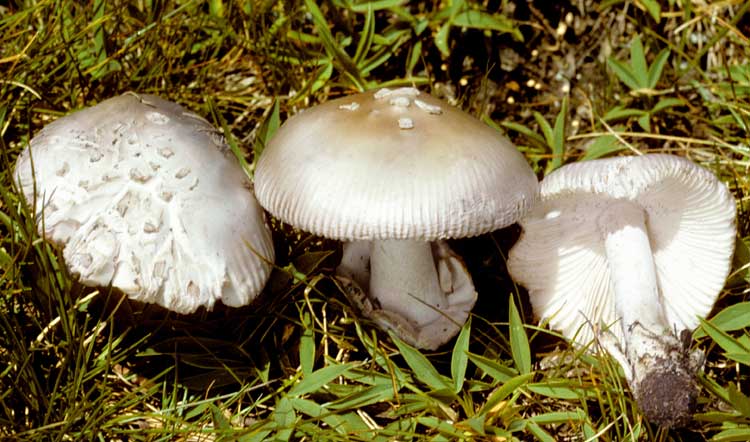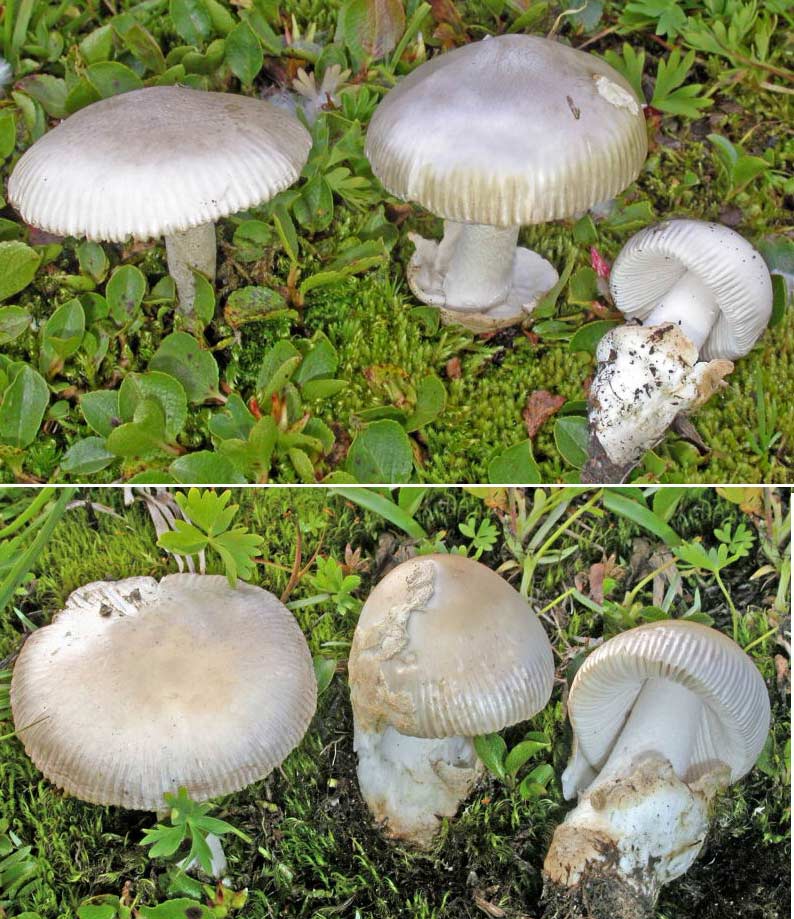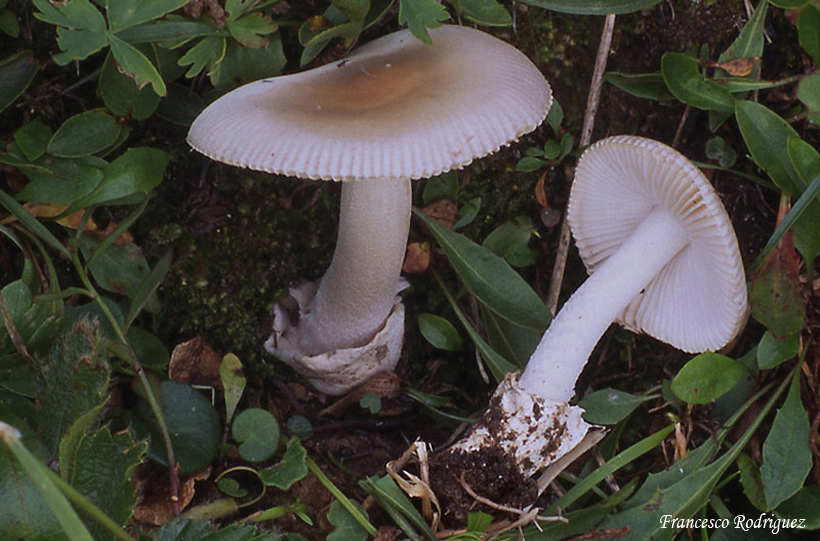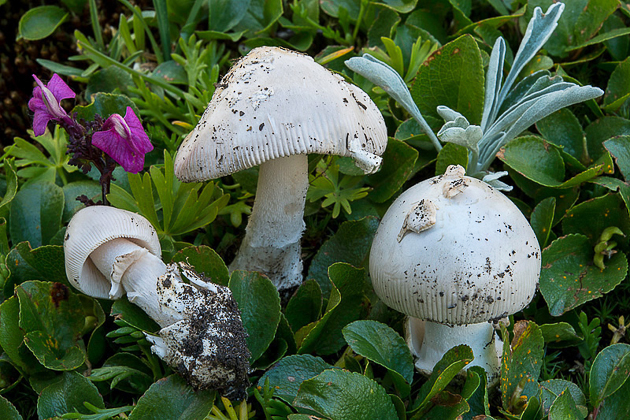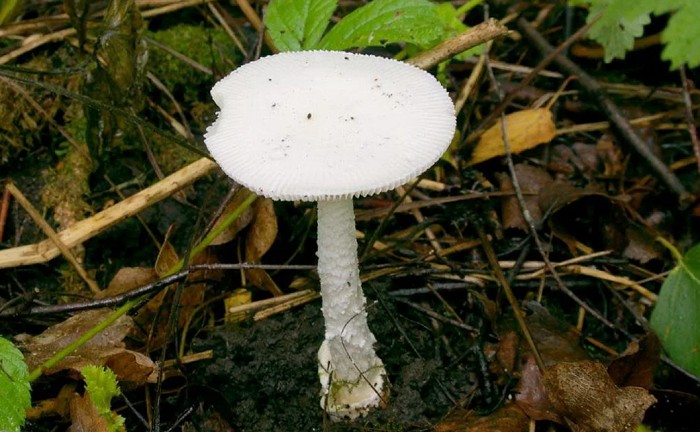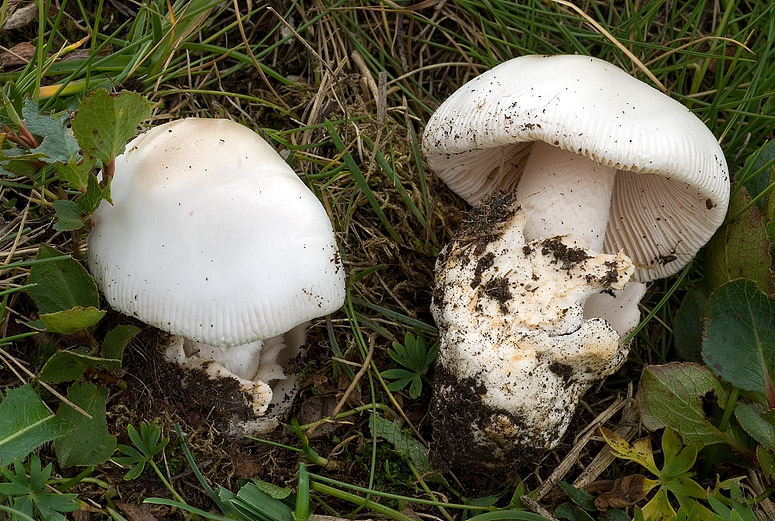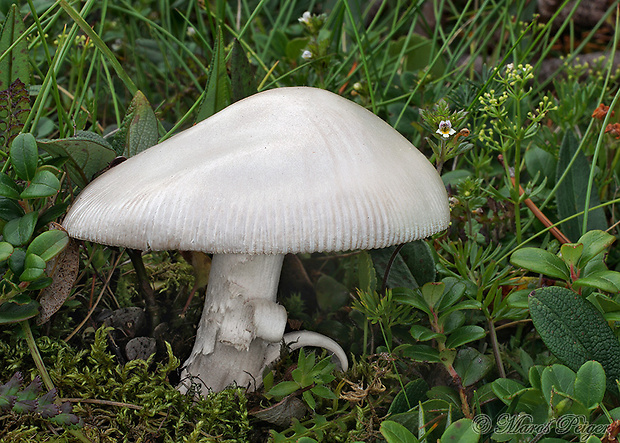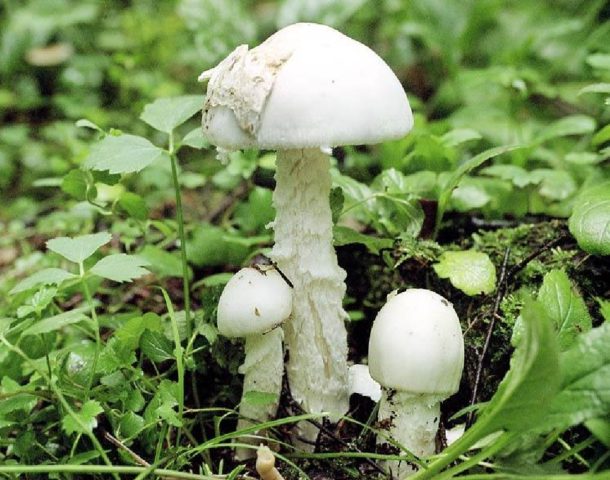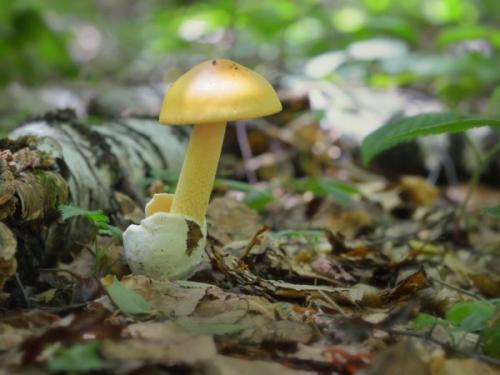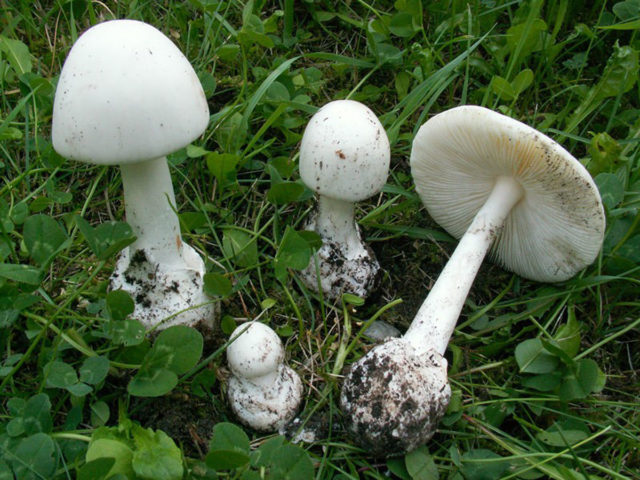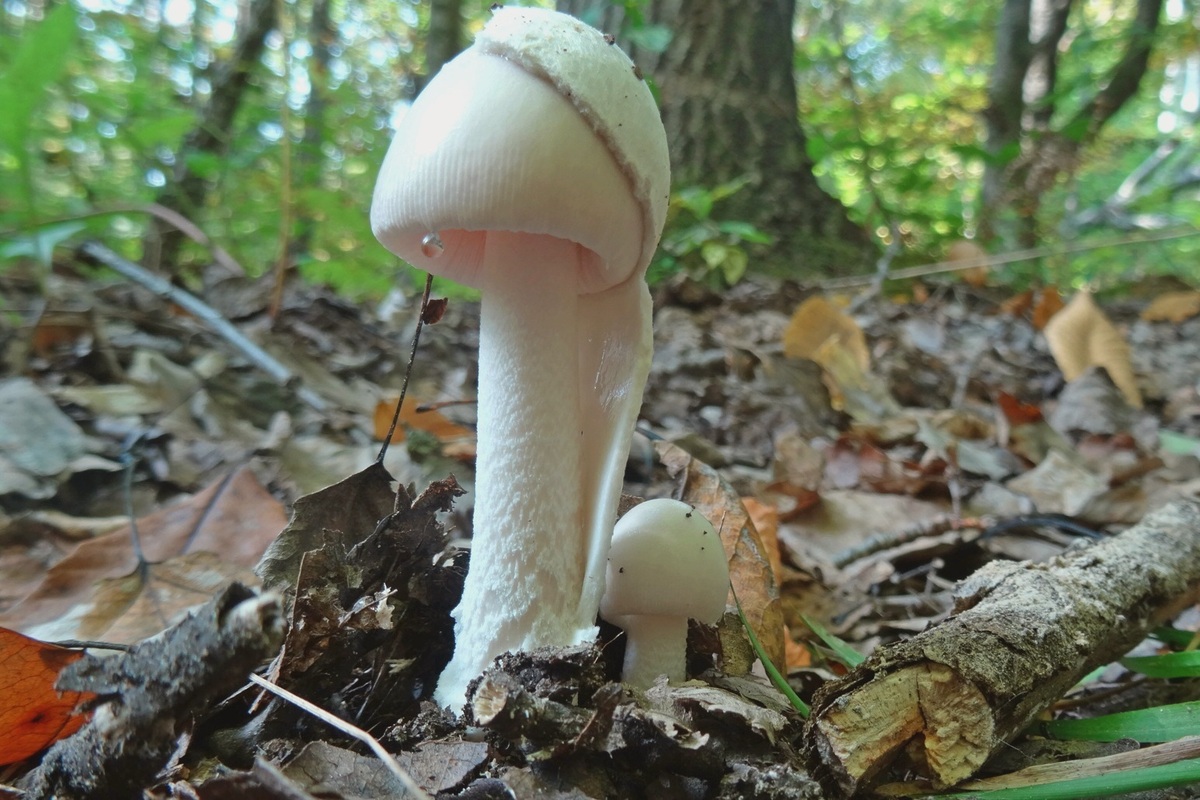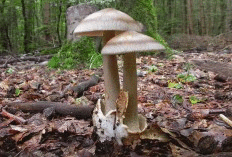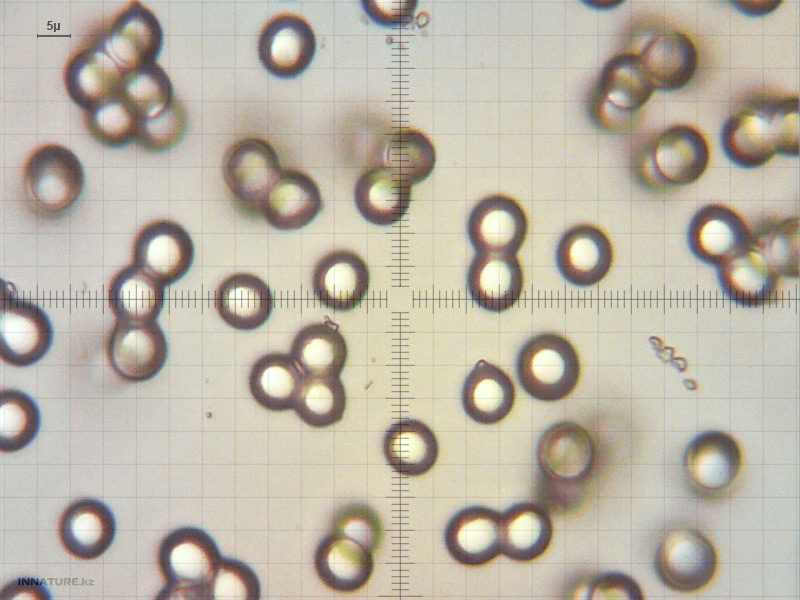All species of the genus Amanita:
| Amanita muscaria (Amanita muscaria) | Amanita bright yellow (Amanita gemmata) | Amanita pantherina |
| Amanita porphyria | Fly agaric (Amanita excelsa) | Amanita muscaria (Amanita phalloides) |
| Smelly fly agaric (Amanita virosa) | Amanita muscaria (Amanita citrina) | Amanita pink-gray (Amanita rubescens) |
| Caesar mushroom (Amanita caesarea) | Amanita ovoid (Amanita ovoidea) | Fly agaric (Amanita franchetii) |
| Float weird (Amanita ceciliae) | Gray float (Amanita vaginata) | Float yellow-brown (Amanita fulva) |
| Saffron float (Amanita crocea) | White float (Amanita nivalis) | Amanita regalis |
If you are in doubt about the edibility of the mushrooms you find, do not take them. The site administration does not bear any responsibility for the actions of people taken on the basis of the information received on the site. Some types of poisonous mushrooms cannot be identified without special equipment and can be confused with edible ones.
Definitioner
- rare (rare smell)
-
In mycology, a rare smell, English. "Raphanoid", is interpreted very loosely and often denotes any smell of raw root vegetables, including potato, ie. not necessarily as sharp, sharp, and crisp as black or white radish.
- Basidia (Basidia)
-
Lat. Basidia. A specialized structure of sexual reproduction in fungi, inherent only in Basidiomycetes. Basidia are terminal (end) elements of hyphae of various shapes and sizes, on which spores develop exogenously (outside).
Basidia are diverse in structure and method of attachment to hyphae.
According to the position relative to the axis of the hypha, to which they are attached, three types of basidia are distinguished:
Apical basidia are formed from the terminal cell of the hypha and are located parallel to its axis.
Pleurobasidia are formed from lateral processes and are located perpendicular to the axis of the hypha, which continues to grow and can form new processes with basidia.
Subasidia are formed from a lateral process, turned perpendicular to the axis of the hypha, which, after the formation of one basidium, stops its growth.
Based on morphology:
Holobasidia - unicellular basidia, not divided by septa (see Fig. A, D.).
Phragmobasidia are divided by transverse or vertical septa, usually into four cells (see Fig. B, C).
By type of development:
Heterobasidia consists of two parts - hypobasidia and epibasidia developing from it, with or without partitions (see Fig. C, B) (see Fig. D).
Homobasidia is not divided into hypo- and epibasidia and in all cases is considered holobasidia (Fig. A).
Basidia is the place of karyogamy, meiosis and the formation of basidiospores. Homobasidia, as a rule, is not functionally divided, and meiosis follows karyogamy in it. However, basidia can be divided into probasidia - the site of karyogamy and metabasidia - the site of meiosis. Probasidium is often a dormant spore, for example in rust fungi. In such cases, probazidia grows with metabasidia, in which meiosis occurs and on which basidiospores are formed (see Fig. E).
See Karyogamy, Meiosis, Gifa.
- Pileipellis
-
Lat. Pileipellis, skin - differentiated surface layer of the cap of agaricoid basidiomycetes. The structure of the skin in most cases differs from the inner flesh of the cap and may have a different structure. The structural features of pileipellis are often used as diagnostic features in descriptions of fungi species.
According to their structure, they are divided into four main types: cutis, trichoderma, hymeniderma and epithelium.
See Agaricoid fungi, Basidiomycete, Cutis, Trichoderma, Gimeniderm, Epithelium.
- Hymeniderm
-
The type of cap skin, consists of non-septic elements located more or less perpendicular to the surface and laid on the same level, resembling the hymenial layer.
Lat. Hymeniderm.
It is subdivided into trichogymenidermis, eugymenidermis, epithelioid hymenidermis.
There is also a transitional structure of the skin from the hymenidermis to the epithelium.(A mixture of rounded cells, characteristic of the epithelium, but located in one layer, and pear-shaped cells, characteristic of hymenidermis, lying at the same level.)
See Gymnial layer, Trichogymenidermis, Eugymenidermis, Epithelioid hymenidermis, Epithelium, Septa.
Description, composition, taxonomy and structural features of the fungus
The mushroom belongs to the genus Amanita, the Amanitov family, has the Latin name Amanita pantherina. It is sometimes called gray, leopard or Agaricus pantherinus, Amanitaria pantherina.
The hat of the panther fly agaric reaches 12 cm in diameter. It has a hemispherical shape, after which it becomes somewhat convex, and at the end it is prostrate. The edge is thin tubular, sometimes flakes hang down that remain from the bedspread. The surface is smooth and shiny, brownish in color, covered with whitish flakes that are easy to separate.
The hymenophore is lamellar (the lower part of the cap), does not grow to the stem, has brown spots, especially at old age.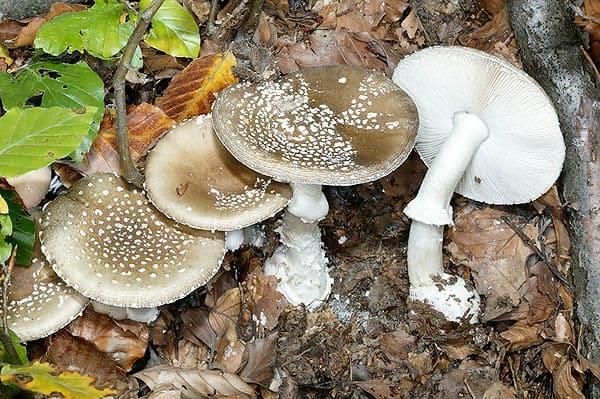
The flesh on the cut does not change color. The smell is unpleasant, has a sweetish taste. The body is watery and fragile. Spores are white, broadly ellipsoid. The hat is light beige, brown and grayish in color, sometimes a dirty olive shade.
The leg grows up to 12 cm in height and 1.5 cm in diameter. Cylinder shape, white color. In the upper part, it is somewhat narrowed, and at the bottom it forms a tuber, hollow inside. Has a white ring-shaped rim, which can be multi-layered. The surface is covered with hairs. The presence of a ring is not necessary, it is often located low, smooth, fragile, hanging down.
A highly poisonous mushroom, the composition contains not only muscarine and muscaridin, which are often found in similar mushrooms, but also scopolamine, hyoscyamine, more characteristic of dangerous plants such as henbane and datura.
Amanita muscaria is included in the Red Book of the Russian Federation in the Specially Protected Natural Territories of the country.
There is information about the mention of the fly agaric in ancient times, and therefore well-known mycologists immediately began to classify it. There were several different attempts, mostly at the border of the 18th and 19th centuries. Many scientists still consider this mushroom to be a kind of common red fly agaric. It began to be described separately after numerous controversies at the beginning of the 19th century.
Time and habitat
Amanita muscaria is capable of forming mycorrhiza with most trees. It is found in conifers, mixed forests, as well as in broad-leaved plantations. Found under pine and oak, beech, prefers strongly alkaline soils. The main habitat is the northern part of the temperate climate. In Russia, they are often found in Siberia, in the Far East. In addition, the panther fly agaric is found in Belarus, Ukraine, Estonia, Latvia and other European countries.
Mass growth is observed in August - September, but can be found starting in July. The mushroom is highly poisonous, it is prohibited for use. It will look different depending on the place of growth - the hat can be from light to dark.
Pusher mushrooms: where to look and how to cook
Pusher mushrooms, in the common people white floats, are theoretically edible, but do not represent any special nutritional value. A closely related species white pusher is a mushroom float orange, the description of the species is very close.
Description of the mushroom
The diameter of the stem of an adult white pusher, Amanitopsis alba, is 8–20 mm with a length of 5–15 cm. The stem is white or off-white and is hollow on the inside.
The saffron float (Amanita crocea) differs from the gray float (Amanita vaginata) by the coloration of the cap surface.
This conditionally edible mushroom has good taste and quality characteristics and is close in the main indicators of nutritional value to the dark brown float (Amanitaumbrinolutea). It has a rather pronounced mushroom aroma.
The hat has distinct scars on the edges. The surface of the fruiting body can have various colors, including gray, yellow-gray, gray-brown, orange shades.The diameter of the cap of an adult specimen of pusher does not exceed 4-9 cm. Young mushrooms have a bell-shaped cap, while adults can have a flat-convex or completely flat cap.
The plates are white, fairly wide and often spaced, of a free type. Spore powder is white. The spores are relatively even, rounded, quite often spherical, with a smooth surface. No staining. Disputes are always non-amyloid.
The species well known to most mushroom pickers are conditionally edible, have relatively good taste characteristics, but are collected extremely rarely, due to the presence of a very fragile cap, which makes mushrooms unsuitable for transportation or processing. In addition, many mushroom pickers are repelled by the dangerous similarity of pushers with poisonous fly agarics.
Biological features
Most often, this species is found in deciduous forests, under birches. The fungus grows best in acidic or neutral soils. Pushers contain betaine, which plays a very important role in basic metabolic processes. Besides the white pusher, var. alba, the following varieties are most common in the forest belt of our country:
- var. vaginata or gray, with an ash-gray cap on a whitish stalk with a white volva;
- var. plumbea or pusher lead-gray, with a very characteristic lead-gray cap and a bluish tint of the stem;
- var. olivaceoviridis or olive green pusher;
- submembranacea or membranous float.
Inexperienced mushroom pickers often confuse edible pushers with poisonous representatives of the genus Amanita. A distinctive feature of edible mushrooms is the loose saccular volva and the well-defined ribbed edges of the cap. The peak fruiting of Amanitopsis occurs in the first ten days of July and lasts most often until the last days of September.
Cooking applications
A small conditionally edible pusher mushroom, according to most mushroom pickers, has a very mediocre taste. Used in cooking after a short boil, well suited for drying. Amanitopsis is used to prepare first and second courses, as well as a variety of snacks.
The process of cooking pushers does not differ from the use of other types of mushrooms in cooking. They should be very carefully cleaned of dirt and rinsed thoroughly. It is recommended to boil pushers for 40-50 minutes. You can salt and pickle Amanitopsis without first soaking or scalding.
Most often, homemade mushroom soups are prepared using pushers. Boiled mushrooms should be rinsed and filled with water again, add chopped potatoes, carrots and seasonings.
The dish is recommended to be served with sour cream and chopped herbs. Potatoes baked with Amanitopsis alba mushrooms and cheese taste good.
Before baking, pushers must be boiled.
How to make mushroom soup (video)
Pushers are very fragile and delicate mushrooms that require especially careful treatment. When collecting them, you should be very careful: in recent years, very often among the causes of severe poisoning is the use of false pushers, which include about ten related varieties of mushrooms from the Mukhomorov family.
(2 5,00 out of 5) Loading ...
Places of growth of white floats.
White floats bear fruit in deciduous and mixed with birch forests. They are very rare, they do not bear fruit every year. They can be found in grass and bushes. They grow on the soil. White floats prefer loamy soils. Come across only one at a time.
They are common in Western Europe and Russia. White floats grow in the suburbs. They bear fruit from July to September, and are massively found in the second half of July.

On the Karelian Peninsula, these are rare mushrooms, they were found only 6 times during 7 years of observation. There they came across in the western and southern parts of the isthmus.This is a very rare species that bears fruit about once every 2 years, with only one fruiting body being formed in each place.
Evaluation of the taste of white floats.
The white float is edible. Its taste is low. It can be eaten dried, fried and boiled.
Although edible, these mushrooms are rarely harvested, as their caps are very fragile and do not tolerate transportation well. In addition, these mushrooms bear a dangerous resemblance to poisonous fly agaric.

Doubles of white floats.
The white float is a relative of the deadly poisonous mushrooms - white fly agaric, smelly fly agaric and white toadstool, so it can be easily confused with these mushrooms. You can distinguish the float from dangerous relatives thanks to the ribbed edges of the cap, the absence of a ring on the leg and the presence of a free wide volva.

Also, a white float is similar to other types of floats, it differs from them only in the color of the cap. But other floats are also harmless and can be eaten.
Due to the fact that porcini floats are rare mushrooms, they have no real culinary value, and besides, they can be confused with very dangerous mushrooms, they are not recommended for harvesting.
Related species of white float.
The gray float is an edible mushroom. Its cap is conical at first, and later becomes almost flat with a round tubercle in the center. The cap is fleshy, and its edges are very thin, furrowed. The surface of the cap is shiny, whitish, gray, olive green, gray-violet or yellow-brown. The pulp is thin, fragile, yellowish, with a sweetish taste, it has a mushroom smell. The stem is high and thin, with a flaky bloom, gray-brown in color.

Gray float (Amanita vaginata)
Gray floats grow in light coniferous and deciduous forests, and can be found in the steppe zone. They grow in temperate climates. Fruiting occurs in May-November.
The float is strange - a conditionally edible mushroom. Its cap varies in shape from bell-shaped to convex-outstretched. Its edges are convex, and the central tubercle is well pronounced. The color of the cap can be brown or red-brown. The leg is long, thick, scaly, gray in color.
Weird floats grow in deciduous forests and conifers. Fruiting from June to October. They grow in Europe, the Far East, North and South America.
Is the mushroom edible or not
There are disputes between mushroom pickers about the taste of white floats, but scientists have no doubts about the usefulness and edibility of pushers. This species contains useful microelements and vitamins, among which group B prevails. Betaine is also present in them, which has a beneficial effect on metabolism.
The float is eaten fried and boiled in many countries.
Before use, they are thoroughly cleaned and washed from dirt, boiled for at least 30 minutes in salted water, the broth is drained and various dishes are prepared with white floats, including winter preparations (salted and pickled).
If the rules for cooking are not followed, inflammatory symptoms occur in the stomach and small intestine, this is due to the presence of resin-like substances in the mushrooms.
The presence of betaine in pushers has led to the fact that mushrooms are used in medicine to treat diseases of the liver, gallbladder and kidneys, as well as breast cancer, Alzheimer's disease, and prostate adenoma.
Where and how does the white fly agaric grow
The usual habitat of these mushrooms is forests, conifers and mixed. Amanita loves moist soil, it is often found on the slopes of ravines, in lowlands, along rivers and swamps. It can grow as single specimens and in whole groups.
The season of the white fly agaric is from late May to July, however, if the summer is rich in rains, then to August. These mushrooms usually disappear by September.
Interestingly, the spores of the white amanita are also poisonous, so it is prohibited to collect any gifts from the forest nearby with the mushroom. Also, you cannot take it in your hands, since the plaque that covers the mushroom can then get on other mushrooms and spoil them.If the fly agaric gets into the basket, unfortunately, the entire crop will have to be thrown away so as not to risk getting poisoned.
External description
Mushroom Snow-white float (Amanita nivalis) is a fruiting body, consisting of a cap and a leg. The cap of this mushroom reaches 3-7 cm in diameter, in young and immature mushrooms it is characterized by a bell-shaped shape, gradually becoming convex-prostrate or simply convex. In the middle of the cap, a bulge is clearly visible - a tubercle. In its central part, the cap of the snow-white float is rather fleshy, but at the edges it is uneven, ribbed. The skin of the cap is mostly white, but has a light ocher tint in the center.
The leg of the snow-white float is 7-10 cm long and 1-1.5 cm in diameter. Its shape is cylindrical, slightly expanding near the base. In immature mushrooms, the leg is quite dense, but as it matures, cavities and voids appear inside it. The leg of young snow-white floats is characterized by a white color, gradually darkens, becoming dirty gray.
The mushroom pulp has no pronounced aroma or taste. In case of mechanical damage, the pulp of the fruiting body of the fungus does not change its color, remaining white.
On the surface of the fruiting body of the snow-white float, the remains of the bedspread are visible, represented by a bag-shaped and wide enough volvo of white color. There is no ring, characteristic of many types of mushrooms, near the stem. On the cap of young mushrooms, you can often see whitish flakes, but they disappear without a trace in ripening mushrooms.
The hymenophore of the snow-white float (Amanita nivalis) is characterized by a lamellar type. Its elements - plates, are located often, freely, and significantly expand towards the edges of the cap. Near the foot of the plate are very narrow, but in general they can have different sizes.
The spore powder is white in color, and the microscopic pore sizes vary within 8-13 microns. They are round in shape, smooth to the touch, contain fluorescent drops in the amount of 1 or 2 pieces. The skin of a mushroom cap consists of microcells, the width of which does not exceed 3 microns, and the length is 25 microns.
Description of the mushroom
Amanita muscaria is also known to mushroom pickers under the name white toadstool (From the Latin Amanita virosa). It is white, not pale. Although they are close relatives, there are a number of significant differences between them.
The English name of the mushroom "destroying angel" is translated as "destroyer angel" - a self-speaking name that does not require explanation.
Amanita muscaria is easy to spot in the forest - all parts of the mushroom have a pure white color, which makes it noticeable against the background of green moss or fallen leaves. Only with age can the mushroom acquire a slight creamy or yellowish tint.
Hat
The cap is usually 5–9 cm in diameter, sometimes there are specimens up to 16 cm in diameter. Initially, it has an elongated bell-shaped shape, becoming flatter as it grows. An obligatory distinguishing feature of this fly agaric is the presence of a prominent crown on the cap. Unlike other types of fly agarics, the smelly one does not have the remains of a common blanket on the cap - the so-called specks. It is smooth, shiny, slightly sticky when wet.
LPs
The plates of the mushroom are often located, free. Their white color is another important sign by which the white toadstool is easily identified. If the plates are colored, then you can be completely sure that this is not a smelly fly agaric.
Leg
The leg is white, up to 12 cm long, up to 1.5 cm in diameter. Slender or slightly curved, with a pronounced tuberous expansion at the base of the mushroom. The surface of the leg is coarse-fibrous, covered with scales directed downward.
On the stem, as a rule, there is a white uneven ring, sometimes growing to the cap. But there are specimens of mushrooms on which the ring disappears completely. Therefore, the widespread opinion that the white toadstool always has a ring on its leg is not true and can lead to an irreparable mistake.
At a very young age, the white grebe is hidden under a common veil and has an ovoid shape. As it grows, this veil breaks and becomes a saccular thickening of the stem at the base of the mushroom - a volvo. It is not always noticeable because it can be buried in the soil.
Pulp
The flesh of the stinking fly agaric is white, does not change color on the cut. Has a faint unpleasant smell, vaguely reminiscent of the smell of rotten potatoes.
Float yellow-brown (amanita orange, yellow-brown): photo and description
| Name: | Float yellow-brown |
| Latin name: | Amanita fulva |
| Type of: | Conditionally edible |
| Synonyms: | Amanita orange, Amanita yellow-brown, Brown float, Orange float |
| Specifications: |
|
| Systematics: |
|
The yellow-brown float is a rather unremarkable representative of the mushroom kingdom, very common. But its belonging to the family Amanitaceae (Amanitovye), genus Amanita (Amanita), raises a number of doubts about edibility. In Latin, the name of this species sounds Amanita fulva, and the people call it orange, yellow-brown fly agaric or brown float.
What a yellow-brown float looks like
A fairly common and widespread yellow-brown float is considered safe for humans, but due to its belonging to the Amanita genus, even experienced mushroom pickers are somewhat wary of this mushroom.
The float itself has a fruiting body of a well-formed cap and leg (agaricoid), a hymenophore is lamellar.
Description of the hat
A young amanita mushroom yellow-brown has an egg-shaped cap with curled edges, which, with its growth, straightens out and becomes flat in diameter from 4 to 10 cm with an inconspicuous tubercle in the center. The color is uneven, orange-brown, darker in the middle up to a brown shade. The surface is smooth, slightly mucous, grooves are clearly visible along the edge.
The pulp is rather fragile, watery, more fleshy in the center of the cap. On the cut, its color is white, the smell is slightly mushroom, the taste is sweetish.
Hymenophore with plates often located not adherent to the pedicle. The color is white with a yellowish or creamy tinge. The spore powder is beige, the spores themselves are spherical.
Leg description
The leg is regular, cylindrical, rather high - up to 15 cm. Diameter - 0.6-2 cm. Rings, like a typical fly agaric, have no rings. But there is a bag-like free Volvo, on which you can see yellow-brown spots.
The surface of the leg is solid white with an orange tint, smooth, sometimes with small felt scales. Inside, it is hollow, the structure is dense, but rather fragile.
Where and how it grows
The yellow-brown float grows everywhere practically throughout the continent of Eurasia - from the countries of Western Europe to the Far East. It can also be found in North America and even in northern Africa. In Russia, it is considered a common and fairly common species, especially in Western Siberia, Primorsky Territory, Sakhalin and Kamchatka.
It grows more in coniferous and mixed forests, less often in deciduous ones. Prefers acidic soils and wetlands.
The fruiting period is long - from early summer to mid-autumn (June-October). Fruit bodies grow both singly and in small groups.
Is the mushroom edible or not
The yellow-brown float is classified as conditionally edible, while it has a weakly expressed, but pleasant taste. Due to the fragility of the pulp, this mushroom is not very popular with mushroom pickers, since in general it is almost impossible to bring the fruit bodies home.
Doubles and their differences
Among similar species with a yellow-brown float, the following can be distinguished:
- the yellowing float, also conditionally edible, is distinguished by a lighter pale yellow color and the absence of spots on the Volvo;
- the float is umber yellow, it is also considered conditionally edible, it is distinguished by the color of the cap without brown tones, as well as a light shade of the edges.
It is also worth noting that outwardly, almost all floats are similar, and they belong to a number of conditionally edible ones. But specifically, the brown float can be distinguished from many representatives of poisonous fly agarics by the absence of a ring on the leg.
Conclusion
The yellow-brown float is a close relative of poisonous fly agarics, but unlike them, this species is still considered conditionally edible and safe for consumption after prolonged boiling. The taste is poorly expressed, therefore, fruit bodies still do not represent any special gastronomic value. Also, mushroom pickers are not of interest due to fragility.

